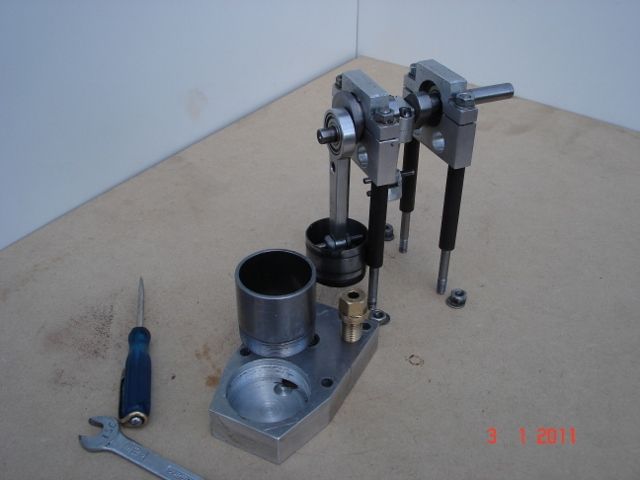Hopper : I agree with everything you have said. I have been thinking about this all night at work. One's mind can concentrate on other things when mopping the floor !
The glass tube has been in contact with the end of the brass cylinder. I will make a gasket for it to sit on.
I also think three gaskets should be made from high temp material (0.4 or 0.8mm ?) and placed between BOTH the D. cylinder (both sides) and the power cylinder (one side) thus separating everything from the cylinder holders. This would surely stop any heat transfer between the two cylinders.
Perhaps just plain cork gasket material would suffice ? This is designed to come in contact with hot engine parts in a car. The high temp material is for exhaust manifolds which is probably more than is required for a Stirling engine.
I am not sure as to the necessity of a stainless steel D. piston. Bengs have designed it with an Al piston so it should work with that. But it would be an interesting exercise to try and make one from stainless steel to see if this made a difference. The D. piston is 12.5mm diameter. I am not sure how my lathe would go machining stainless steel
I am working again tonight and sleeping most of tomorrow so I will have to wait until Monday to buy the Viton O ring from Allied bearings and the high temp gasket material from Autobarn or Supercheap
Edited By Brian John on 27/02/2016 07:05:20
Edited By Brian John on 27/02/2016 07:06:24
Edited By Brian John on 27/02/2016 08:12:25
Gordon Tarling.


 .
.


